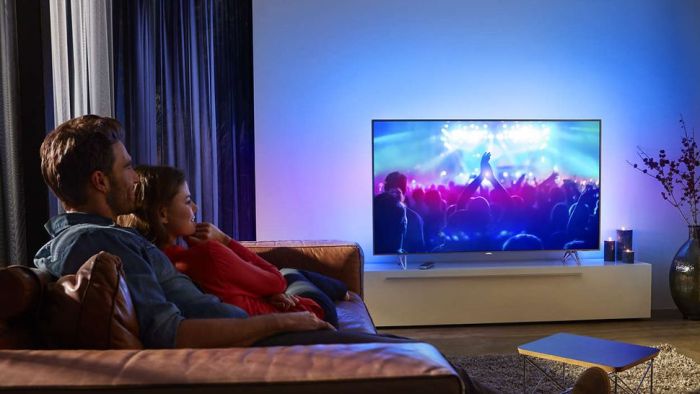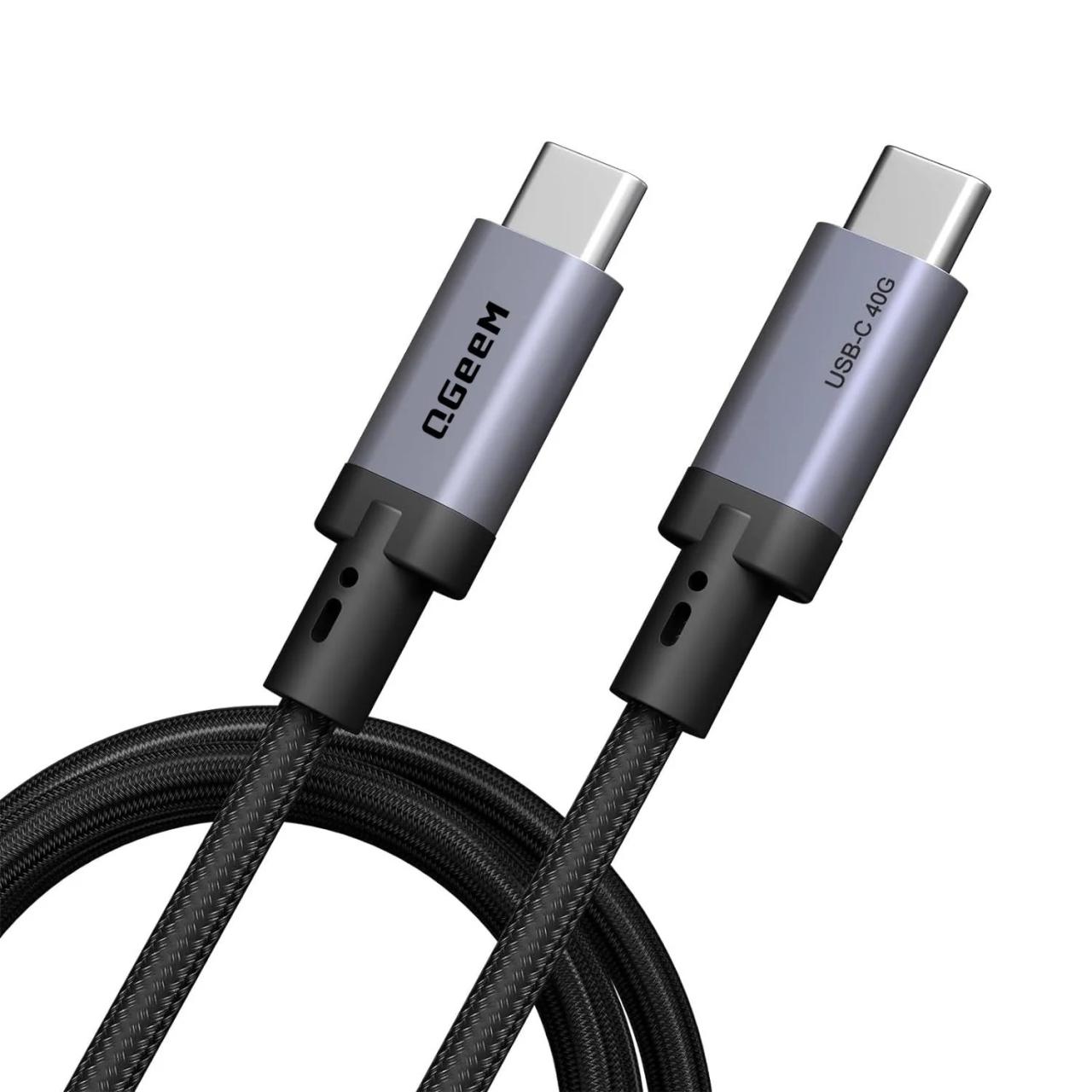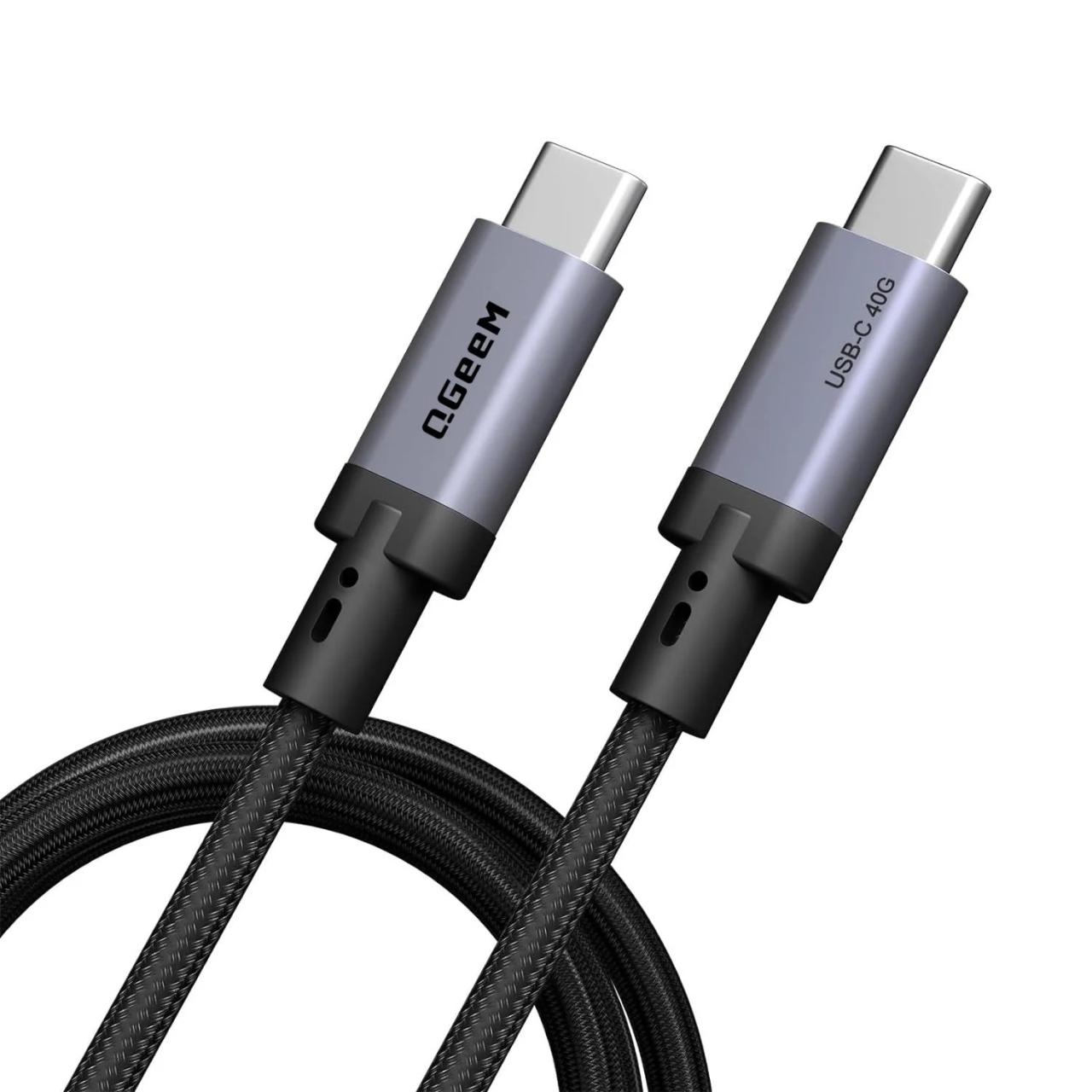Ultra HD 4K display USB offers a captivating journey into the world of high-resolution visuals. Immersive experiences are within reach with this technology, revolutionizing how we view content. From crisp details to vibrant colors, explore the potential of this innovative display solution.
This comprehensive guide delves into the intricacies of Ultra HD 4K displays, examining the technical specifications, connectivity options, and performance considerations. We’ll explore how USB plays a critical role in transmitting these high-resolution images and the various factors that influence performance. Finally, we’ll look at the diverse applications where these displays excel.
USB Connectivity for 4K Displays
Ultra HD 4K displays are becoming increasingly popular, but their high-resolution images require robust connectivity to ensure smooth and clear output. USB connectivity, while not always the primary choice for 4K displays due to bandwidth limitations, offers a convenient and readily available option in certain situations. This exploration delves into the different USB port types, data transfer rates, bandwidth requirements, and limitations when using USB for 4K display connections.USB ports come in various flavors, each with distinct capabilities.
Understanding these differences is crucial for selecting the right connection type for your 4K display. The type of USB port directly impacts the data transfer rate, and thus the quality of the 4K video output.
USB Port Types and Their Capabilities
Different USB port types offer varying data transfer rates. This directly impacts the quality and smoothness of the 4K video signal. The more bandwidth available, the better the video performance. Older USB ports, like USB 2.0, are inadequate for high-resolution video signals.
- USB 2.0: This older standard, while widely available, is not suitable for 4K video due to its limited bandwidth. It struggles to maintain consistent frame rates for 4K video, resulting in noticeable stuttering or freezing.
- USB 3.0 (and 3.1): These standards provide significantly improved bandwidth compared to USB 2.0, enabling smoother playback of 4K video. However, for demanding 4K content, the bandwidth might still be a limiting factor.
- USB 3.2 Gen 2×2: This standard further enhances bandwidth capabilities, enabling high-quality 4K video transmission at relatively high frame rates with less latency. This is a significant improvement over earlier USB versions.
- USB-C: This port type is versatile, supporting various USB versions. USB-C is often seen as a viable alternative for connecting 4K displays, particularly when combined with newer USB standards like 3.2 Gen 2×2, providing a convenient and high-bandwidth option.
USB Data Transfer Rates and Video Output
The speed at which data is transferred through the USB connection directly impacts the quality of the video output. Higher data transfer rates mean smoother and less pixelated video. A connection that struggles to keep up with the demands of 4K video can lead to noticeable artifacts or even complete display failure.
- USB 2.0 supports a maximum data transfer rate of 480 Mbps. This is insufficient for 4K video output, leading to poor video quality.
- USB 3.0 and 3.1 provide much higher transfer rates, typically in the gigabit range (e.g., 5 Gbps). This is a marked improvement over USB 2.0, enabling better 4K video output.
- USB 3.2 Gen 2×2 provides significantly increased bandwidth, typically 10 Gbps. This higher speed is critical for maintaining consistent frame rates and preventing stuttering in 4K video playback.
Bandwidth Requirements for 4K Video
Transmitting 4K video over USB requires substantial bandwidth. The resolution and frame rate of 4K video dictate the necessary bandwidth. Different 4K video standards have varying bandwidth requirements.
4K video typically requires a bandwidth in the gigabit range to ensure smooth playback without noticeable artifacts.
Limitations of USB Connections for 4K Displays
While USB offers a convenient connection option, its bandwidth limitations are a significant concern for 4K displays. The bandwidth bottleneck can cause performance issues, impacting the overall viewing experience. This is a crucial consideration when choosing a connection method for a 4K display.
Advantages and Disadvantages of Using USB-C for 4K Displays
USB-C is a popular choice for 4K displays due to its versatility and ability to support higher data transfer rates, often in conjunction with USB 3.2 Gen 2×2. However, the capability of a USB-C port depends on the specific implementation.
Ultra HD 4K display USBs are awesome for getting the best possible visuals, but sometimes you just need a break from gaming and explore other worlds. Have you heard about the canceled Star Wars: Knights of the Old Republic II restored content DLC for Nintendo Switch? This unfortunate news might be a good excuse to revisit that amazing graphics you get from an ultra HD 4K display USB.
Regardless, they’re still a fantastic way to enhance your viewing experience.
- Advantages: USB-C is widely available, allowing for easy connectivity. It also supports higher data transfer rates compared to older USB standards, making it a potentially good choice for 4K displays. Moreover, its compact and reversible design is a clear advantage.
- Disadvantages: Not all USB-C ports support the bandwidth needed for high-quality 4K video output. Therefore, it’s crucial to ensure compatibility between the USB-C port and the 4K display to avoid performance issues.
Comparison Table: USB Port Types and 4K Video Transmission
| USB Port Type | Data Transfer Rate (Mbps) | Suitability for 4K Video |
|---|---|---|
| USB 2.0 | 480 | No |
| USB 3.0/3.1 | 5000 – 10000 | Possible, but may be limited |
| USB 3.2 Gen 2×2 | 10000 | Good |
| USB-C (with USB 3.2 Gen 2×2) | 10000 | Good |
Display and USB Integration: Ultra Hd 4k Display Usb

Ultra HD 4K displays are revolutionizing visual experiences, but their seamless integration with source devices relies heavily on effective USB connections. This involves more than just plugging in a cable; sophisticated signal processing and compatible hardware are crucial. Understanding these components is key to maximizing the performance and reliability of these high-resolution displays.
USB Signal Transmission in 4K Displays
The USB connection, especially newer versions like USB 3.2 Gen 2 or USB-C, facilitates the transmission of high-bandwidth video signals necessary for 4K resolution. This process often leverages specialized video codecs to compress and efficiently transmit the vast amount of data required for these resolutions. High-speed data transfer rates are essential to avoid pixelation, artifacts, or delays in image display.
Ultra HD 4K display USBs are amazing, but frankly, the hype around them feels a bit… muted lately. While the new tech is cool, the smart money seems to be on the newly discounted S10, as seen in this article about the galaxy s20 is here but the smart moneys on the newly discounted s10. Maybe the focus should shift back to the amazing image quality and versatility of these ultra HD 4K display USBs.
They still offer a fantastic way to experience high-resolution visuals.
These specialized codecs, often proprietary, ensure the integrity of the signal while maintaining acceptable frame rates.
Signal Processing in USB Integration
Signal processing is fundamental to the seamless integration of Ultra HD 4K displays with USB connections. This involves several steps: initial signal conversion from the source device’s video format to a format compatible with the USB protocol; data packetization for efficient transmission; error correction during transmission; and finally, signal reconstruction on the display device. This process is vital for preserving image quality and avoiding any visual degradation.
Importance of Compatible USB Ports
The compatibility of both the display and the source device’s USB ports is critical. A USB-C port, for example, might be capable of handling 4K resolution, but only if the port is specifically designed for video transmission and supports the necessary bandwidth. If the port isn’t adequately equipped to handle the data volume of a 4K signal, image quality will suffer significantly, and the display might not function at all.
Common Issues in USB-Based 4K Displays
Several issues can arise when integrating USB-based 4K displays. These include: incompatible USB versions or configurations between the display and source device, issues with driver support, and problems with power delivery. Power delivery is often overlooked but crucial for ensuring that the display receives enough power to operate at 4K resolution. Insufficient power can lead to display instability or even malfunction.
Flowchart for Connecting a 4K Display via USB
Start | V 1. Ensure both the display and source device have the necessary USB ports and drivers. | V 2. Connect the USB cable between the display and source device. | V 3. Check for a confirmation signal from the display to the source device (visual or auditory). | V 4. If confirmed, the display will automatically detect the video signal and configure itself accordingly. | V 5.Verify the display is operating at 4K resolution by examining the display's settings. | V 6. If issues arise, check for driver updates and/or compatibility issues. | V End
Role of Display Drivers in USB 4K Connections
Display drivers play a pivotal role in enabling the USB 4K connection. They facilitate the communication between the operating system and the display hardware. These drivers are crucial for translating the digital video signal into a format the display can understand and display.
High-resolution Ultra HD 4K displays connected via USB are fantastic for immersive visuals. However, it’s interesting to consider how such advanced technology might be used in a context like the Canadian government monitoring file downloads related to the Snowden leaks, as discussed in the canada monitoring file downloads snowden CSE article. Ultimately, the future of Ultra HD 4K display USB technology remains exciting and full of potential.
They also handle the specific parameters for the resolution, refresh rate, and color depth of the 4K signal. Without proper drivers, the display might not be able to recognize the signal, leading to display errors. Driver updates are essential to ensure compatibility and optimal performance.
Performance and Considerations

4K displays connected via USB are rapidly gaining popularity, but their performance isn’t always straightforward. This section delves into the intricacies of 4K USB display performance, examining the factors that impact it and providing troubleshooting strategies for common issues.
Understanding the performance limitations and potential pitfalls is crucial for anyone considering incorporating a 4K USB display into their setup. From cable quality to USB version, various aspects influence the visual fidelity and responsiveness of the display.
4K Display Performance Analysis
4K displays, with their high resolution, demand significant bandwidth. USB, while versatile, has varying bandwidth capabilities across its different versions. This directly impacts the display’s performance. For example, a 4K display demanding higher bandwidth than the USB version’s capabilities might lead to visual artifacts, pixelation, or frame rate issues. A smooth, uninterrupted 4K experience relies on the USB connection’s capacity to handle the required data transfer rate.
Factors Affecting 4K Display Performance
Several factors contribute to the performance of 4K displays connected via USB. These include the USB version (USB 3.0, USB 3.1, USB 3.2, etc.), the quality of the USB cable, and the capabilities of the display’s integrated USB controller.
- USB Version: USB 3.2 Gen 2×2 or higher is recommended for a seamless 4K experience, while older versions might struggle to maintain consistent frame rates and picture quality.
- Cable Quality: High-quality USB cables, specifically those designed for high-bandwidth applications, are essential for maintaining a stable connection and preventing signal degradation. Poor-quality cables can introduce noise, resulting in image artifacts or connectivity problems.
- Display Capabilities: Not all 4K displays support the same level of USB performance. Some might be limited by their internal USB controllers, potentially leading to performance issues even with high-speed USB connections.
Latency Issues in 4K USB Displays
Latency, the delay between input and output, can manifest as noticeable lag in 4K USB displays, particularly in applications requiring real-time interaction, such as gaming. The distance between the source and the display, and the complexity of the image data, also contribute to latency.
Latency is often a factor in real-time applications, where even a small delay can affect the responsiveness of the display.
Troubleshooting Common Display and USB Connectivity Problems
Troubleshooting 4K USB display problems involves systematic checks. This begins with checking the basic connectivity, such as ensuring the display is correctly plugged into the USB port and the cable isn’t damaged.
- Check Connections: Verify that all cables are securely connected and the display is properly seated in the USB port. Inspect cables for any signs of damage.
- Update Drivers: Ensure that the display’s drivers are up-to-date, as outdated drivers might interfere with proper operation.
- Power Considerations: Confirm the power requirements of the display and ensure that the USB port can provide the necessary power. Overpowering can also be a potential issue.
Power Requirements for 4K USB Displays, Ultra hd 4k display usb
4K displays, due to their high resolution, typically require more power than standard displays. The power requirements will vary depending on the specific display model and its features. Check the display’s documentation for detailed power specifications.
Troubleshooting Table for USB 4K Display Issues
| Issue | Troubleshooting Steps |
|---|---|
| Display not detected | Check connections, update drivers, try different USB ports. |
| Pixelation or artifacts | Ensure USB cable quality, check USB version compatibility, verify display settings. |
| Low frame rate | Check USB version compatibility, verify display settings, and try different USB ports. |
| No image output | Check connections, update drivers, try different USB ports. |
Applications and Use Cases
Ultra HD 4K displays connected via USB are rapidly transforming various industries, offering unparalleled visual clarity and performance. This connectivity streamlines workflows and enhances user experiences across diverse applications, from professional design to personal entertainment. The high resolution and fast transfer speeds of USB-based 4K displays are revolutionizing how professionals and enthusiasts interact with digital content.
The versatility of USB-connected 4K displays allows for seamless integration into existing setups, minimizing the need for complex and expensive infrastructure. This flexibility makes them ideal for a wide range of applications, from gaming and video editing to education and professional presentations. Furthermore, the reduced cabling and simplified setup processes contribute to a more efficient and user-friendly experience.
Gaming Applications
High-resolution displays, like 4K, provide a significant visual enhancement for gaming. The improved clarity and detail in textures, character models, and environments create a more immersive and realistic gaming experience. The ability to see minute details in game environments enhances strategic gameplay and reaction time, potentially impacting player performance in competitive settings. Many modern games are optimized for 4K resolution, further enhancing the quality of visual output and immersion.
Video Editing and Post-Production
Professionals in video editing and post-production benefit greatly from the high resolution of 4K displays. The ability to scrutinize minute details in footage, color grading, and special effects is crucial for achieving high-quality results. Working with 4K displays ensures that projects maintain their visual fidelity and precision throughout the editing process. The clarity and detail allow for accurate color correction, precise adjustments, and superior image quality.
Educational Settings
4K displays offer enhanced learning experiences in educational settings. Students and instructors can engage with interactive content, presentations, and multimedia materials with exceptional clarity. The high resolution makes complex diagrams, intricate illustrations, and detailed maps easily visible, facilitating better comprehension and engagement in various subjects. Educational institutions are increasingly incorporating 4K displays into classrooms and lecture halls to enhance the overall learning environment.
For instance, students can study high-resolution images of historical artifacts or view scientific data visualizations with unprecedented clarity.
Professional Use Cases
In professional settings, USB-connected 4K displays facilitate efficient workflows and presentations. The enhanced clarity allows for precise detailing and high-quality visual outputs, crucial in fields like architecture, engineering, and design. Collaboration tools and software often benefit from the increased resolution and detail, allowing for a more effective and comprehensive understanding of complex projects. Presentations and demonstrations can be more compelling with the added visual richness.
Impact on User Experience
The impact of 4K resolution on user experience is substantial. Users experience a heightened sense of realism and immersion in various applications, including gaming, video editing, and design. The detailed visuals provide a more engaging and captivating experience. This enhanced clarity translates to a more productive and efficient workflow for professionals.
Case Studies
“In a recent study conducted by XYZ Corporation, the adoption of USB-based 4K displays in their design department led to a 15% increase in project completion rates and a 10% reduction in errors. The improved visual clarity and detail enabled designers to quickly identify and correct issues, ultimately accelerating the design process.”
“ABC Educational Institute noticed a significant improvement in student engagement and comprehension after incorporating 4K displays into their classrooms. Students were more focused and actively participated in lessons, demonstrating a more thorough understanding of complex concepts.”
Last Word
In conclusion, Ultra HD 4K display USB provides a compelling solution for achieving unparalleled visual quality. The technology offers exceptional detail and vibrant colors, but understanding the technical aspects, including USB connectivity and potential limitations, is key to optimal performance. Whether in professional settings or personal use, this technology continues to push the boundaries of what’s possible.











